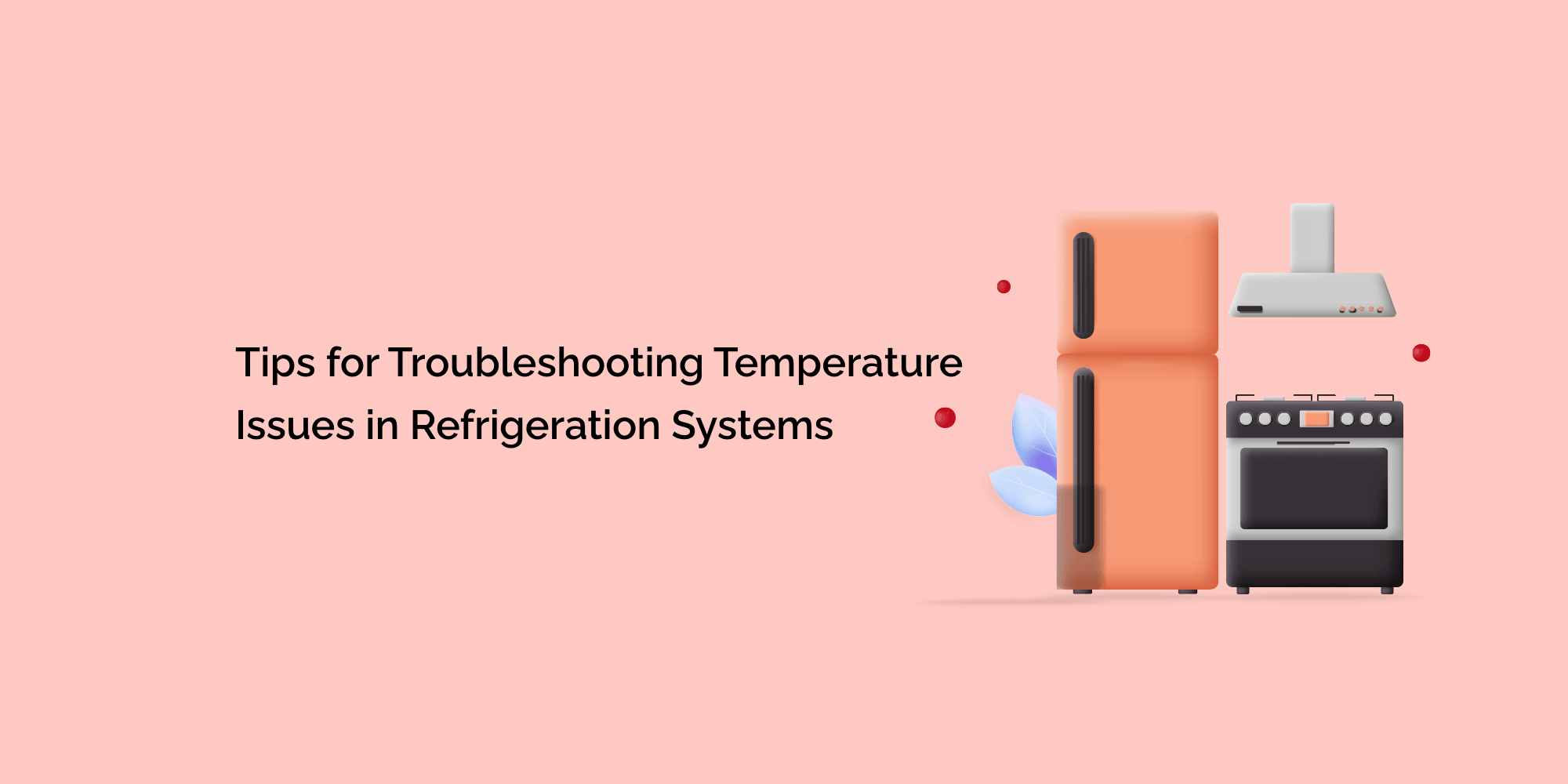Refrigeration systems play a crucial role in various industries, including food service, healthcare, and manufacturing. Maintaining the correct temperature is essential for preserving the quality and safety of perishable goods. However, temperature issues can arise, compromising the performance and efficiency of refrigeration systems.
In this blog, we will provide a comprehensive guide on troubleshooting temperature issues in refrigeration systems. By understanding the common problems and implementing effective solutions, you can ensure optimal temperature control, prevent product spoilage, and minimize downtime.
Understanding the Importance of Temperature Control in Refrigeration Systems
To comprehend the significance of troubleshooting temperature issues, it's important to understand the critical role temperature plays in refrigeration systems. In this section, we will explore why precise temperature control is vital for preserving the freshness and safety of perishable goods.
We will discuss the potential consequences of temperature deviations, including bacterial growth, food spoilage, and compromised product quality. Furthermore, we will outline the regulatory requirements and industry guidelines that govern temperature control in various sectors.
Common Causes of Temperature Issues in Refrigeration Systems
Understanding the root causes of temperature issues is crucial for effective troubleshooting. This section will discuss the common causes of temperature fluctuations in refrigeration systems, such as:
Thermostat Malfunction:
Explore how thermostat malfunctions can lead to inaccurate temperature readings and improper control of the refrigeration system.
Insufficient Insulation:
Discuss how poor insulation can cause temperature leakage, resulting in temperature instability and energy inefficiency.
Refrigerant Leaks:
Examine how refrigerant leaks can disrupt the cooling process, leading to inadequate temperature control.
Condenser Issues:
Discuss how condenser problems, such as clogged coils or fan malfunctions, can affect heat dissipation and compromise temperature control.
Evaporator Problems:
Explore how issues with the evaporator, such as frost buildup or fan motor failure, can impact heat exchange and result in temperature fluctuations.
Airflow Obstruction:
Discuss how blocked airflow due to debris, ice buildup, or improper placement of goods can impede temperature distribution and compromise cooling efficiency.
Troubleshooting Techniques for Temperature Issues
This section will provide a step-by-step guide on troubleshooting temperature issues in refrigeration systems. We will discuss the following techniques:
Visual Inspection:
Highlight the importance of conducting a visual inspection to identify any visible signs of issues, such as damaged components, refrigerant leaks, or airflow obstructions.
Temperature Calibration:
Discuss the process of calibrating temperature sensors and thermostats to ensure accurate temperature readings and control.
Checking Insulation:
Explore how to inspect and assess the insulation of the refrigeration system, including doors, seals, and insulation materials, to identify any potential leaks or gaps.
Refrigerant Level and Leak Detection:
Discuss methods for checking refrigerant levels and detecting leaks, such as pressure measurements and the use of leak detection tools.
Condenser and Evaporator Maintenance:
Explore the importance of regular maintenance, including cleaning condenser coils, ensuring proper airflow, and addressing issues with the evaporator, to optimize temperature control.
Airflow Management:
Discuss techniques for managing airflow, such as ensuring proper ventilation, removing obstructions, and organizing goods to facilitate optimal temperature distribution.
Advanced Troubleshooting and Professional Assistance
While many temperature issues can be resolved through basic troubleshooting techniques, certain complex problems may require advanced troubleshooting or professional assistance. This section will discuss situations in which it is advisable to seek expert help, such as when dealing with electrical issues, refrigerant system repairs, or complex control system malfunctions. We will emphasize the importance of engaging qualified technicians or refrigeration specialists for comprehensive diagnosis and resolution.
Preventive Maintenance for Temperature Control
Preventive maintenance plays a vital role in ensuring the long-term performance and reliability of refrigeration systems. In this section, we will discuss the importance of regular maintenance tasks, such as cleaning, lubrication, and system checks.
We will explore the benefits of preventive maintenance in identifying and addressing potential temperature issues before they escalate. Furthermore, we will highlight the significance of maintaining a maintenance schedule and keeping detailed records to track system performance and address recurring problems.
Best Practices for Temperature Monitoring
Effective temperature monitoring is essential for early detection of temperature issues and preventing temperature excursions. In this section, we will discuss best practices for temperature monitoring, including:
-
Implementing Continuous Monitoring: Explore the benefits of using automated temperature monitoring systems that provide real-time data and alerts.
-
Placing Temperature Sensors: Discuss the importance of strategically placing temperature sensors in critical areas to ensure accurate and representative temperature readings.
-
Data Analysis and Documentation: Highlight the significance of analyzing temperature data, identifying trends, and maintaining comprehensive records for regulatory compliance and quality assurance purposes.
-
Regular Calibration and Maintenance: Emphasize the importance of calibrating temperature sensors and maintaining monitoring equipment to ensure accurate and reliable temperature measurements.
Regulatory Compliance and Guidelines
This section will focus on the regulatory compliance requirements and guidelines related to temperature control in various industries. We will discuss the importance of adhering to regulatory standards and guidelines, such as those set by health departments, food safety agencies, and industry-specific regulatory bodies. We will explore the consequences of non-compliance and highlight the significance of incorporating regulatory requirements into temperature control troubleshooting processes.
Conclusion:
Troubleshooting temperature issues in refrigeration systems is crucial for ensuring optimal performance, product safety, and operational efficiency. By understanding the common causes of temperature fluctuations and implementing effective troubleshooting techniques, businesses can minimize downtime, prevent product spoilage, and maintain compliance with regulatory standards.
Through preventive maintenance, accurate temperature monitoring, and adherence to best practices, organizations can achieve reliable temperature control and enhance the overall reliability and longevity of their refrigeration systems. Let us embrace these tips for troubleshooting temperature issues and optimize temperature control in refrigeration systems for improved business outcomes and customer satisfaction.








